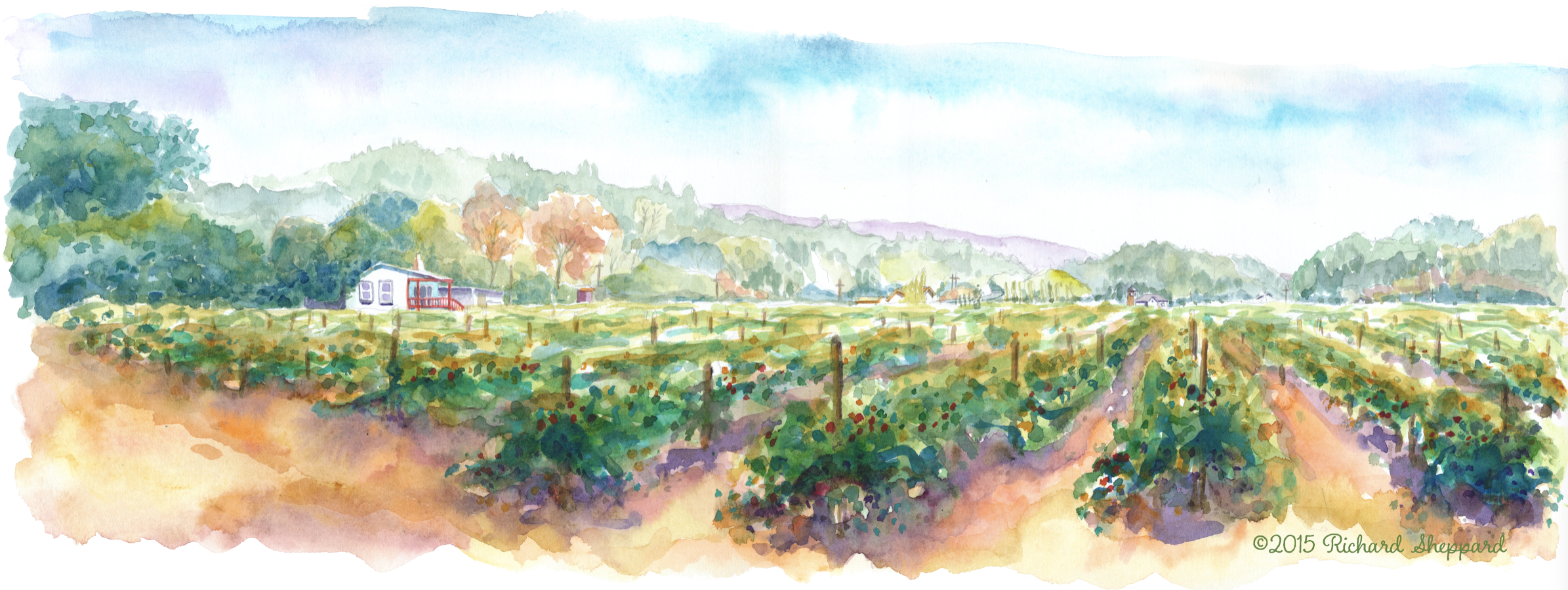Sketch of Vince Tofanelli’s vineyard located in Calistoga (Napa County) just before harvest. Though Vince sells most of his grapes to wineries, he reserves a portion for his own label, Tofanelli Wines. They are some of the best I’ve tasted. Vince was nice enough to allow me access to his vineyards many times over the course of a year. I cover all the details in my book, “Impressions of Wine County.”
Category: Napa County
Chateau Montelena’s Estate Cabernet Vineyard
Bo Barrett pulls off the dirt road at the far end of the estate. We step out of the truck and into the shade of a large oak tree, looking back towards the winery over a field of Cabernet grapes planted in 1974. The weather is hot but a gentle breeze is just enough to keep my skin cool. Bo comments, “Our property is unique in that we have all three types of Napa soil. Volcanic, which is up on the hill, the rocky, alluvial soil where water once flowed, and the sedimentary valley floor. Vineyards need to stress to a certain extent to produce great wine. That’s why planting in these soils work so well.”
Bo’s Vineyard Truck at Chateau Montelena
 So why was the Judgment of Paris so important?
So why was the Judgment of Paris so important?
Six California Chardonnays along with four French white burgundies were selected for a blind tasting event in Paris in 1976. Top French wine experts judged and ranked the wines, and the 1973 Chateau Montelena’s Chardonnay came out on top, making history. There was also a red competition featuring California Cabernet Sauvignon vs. French Bordeaux in which Napa’s Stag’s Leap Wine Cellars’ Cabernet took top prize also.
In Retrospect, the Judgement of Paris was seminal, but at the time, no one was talking about it and it wasn’t until years later that we even heard about it. There just wasn’t much fuss over it at the time. But, as history has shown, it changed the way people viewed California wines.

